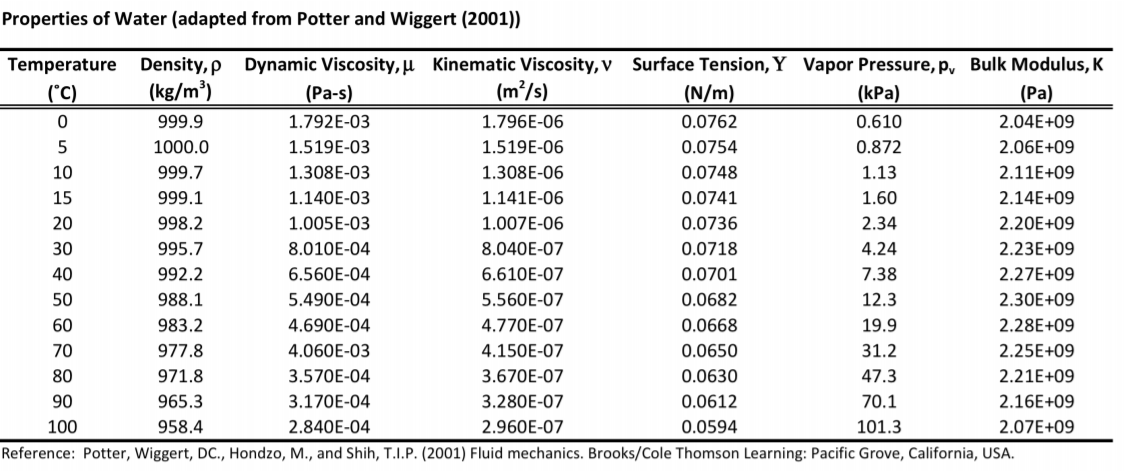

Water, mercury, and kerosene are easily flowable liquids so they can be eliminated. Thus, water is "thin", having a low viscosity, while vegetable oil is "thick" having a high viscosity. Viscosity describes a fluid's internal resistance to flow and may be thought of as a measure of fluid friction. … The word viscous comes from the Latin root viscum, meaning sticky. Syrup and tar, on the other hand, have a high viscosity, as they are "thick". In a simple example, water has a low viscosity, as it is "thin". Viscosity is a physical property of fluids. A fluidwith large viscosity resists motion because its molecular makeup gives it a lot of internal friction. It describes the internal friction of a moving fluid. Viscosity is a measure of a fluid's resistance to flow. You can think of water (low viscosity) and honey (high viscosity). Viscosity is often referred to as the thickness of a fluid. Viscosity is the resistance of a fluid (liquid or gas) to a change in shape or movement of neighbouring portions relative to one another. What is viscosity of water at room temperature?.Rearranging the equation above we can then find an expression for the viscosity of the fluid.īelow we have a table with three different balls with different densities and size moving through the glycerin at slow velocities. Plugging everything into the equation we can then find our expression for Stokes law. Where η is the viscosity of the fluid, r is the radius of the ball and is the terminal velocity of the ball in that particular fluid. Where ρ is the density of the ball and V is the volume of the ball (or the amount of water that it displaces. To make the weight more relatable to the density we can use the relation below:
Viscosity of water in pa s plus#
The buoyancy force plus the drag force is equivalent to the weight: The figure below shows this:Īt terminal velocity ( ) the net force on the ball is zero. When the ball is moving through the fluid the force of gravity is acting down on it while the forces of buoyancy and drag are acting on it in the opposite direction. This means we have a large Reynolds number. Unfortunately for our purposes we cannot show stokes law with water, because the inertial forces dominate over the viscous forces. For that to happen we need to have a small Reynolds number.The viscosity can be determined from the velocity, mass and volume of the ball. The reason why it has to be at small velocities is so that the flow is laminar and not turbulent. Stokes law deals with small spherical objects that are moving through a fluid at small velocities. In the water the flow is irregular and chaotic, otherwise known as turbulent flow. In water the same balls will sink with non-uniform motion. In glycerin the balls should fall with a constant velocity. For the purposes of our demonstration we will keep both tubes at room temperature(20° C) with little to no fluctuation in heat. For liquids, when temperature increase the viscosity decreases. For gases, when temperature increases the viscosity increases. Viscosity is also very temperature dependent. The pascal second is the SI unit for viscosity. It is given as the velocity of the moving surface divided by l (the original length of the material). Strain rate is the rate of change of deformation or strain in a material. It is defined as the force tangent to the material surface divided by the area in which it acts. Shear stress is the the friction between fluid particles sliding past each other. Viscosity is denoted by η (eta) as the ratio of the shear stress (Force/Area) to the strain rate. Viscous forces oppose the motion of one portion of the fluid relative to another. Viscosity is internal friction inside a fluid. Is it close to the value you found experimentally? Alternatively use the viscosity of glycerin to calculate the terminal velocity.Also, compare it to the given values in the table below. Using the times recorded in glycerin find the terminal velocity and use that in stokes equation to find the viscosity of glycerin.Ask students why Stoke s Law will not work for water in this case.switch off the stopwatch when the ball passes the second ring.Start the stopwatch when the ball passes the first ring (this time will be used to calculate the terminal velocity of the ball).Both tubes have two dark rings a meter apart. Two long tubes are filled with fluids of different viscosities, one with water and the other with glycerin. Finding viscosity of a liquid by measuring velocity of small balls sinking in the tall tubes, and applying Stoke’s equation.


 0 kommentar(er)
0 kommentar(er)
